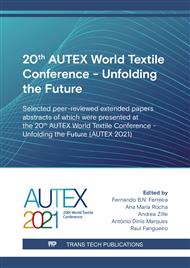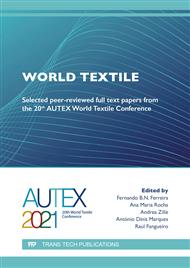p.3
p.11
p.17
p.27
p.39
p.49
p.61
p.71
T-Shirt Design and Pattern Optimization to Create Less Pre-Consumer Waste Prototype
Abstract:
The article discusses the possible ways to change and develop t-shirt patterns by applying methods of zero and less waste design - by assessing the manifestation of the reduction from the cut-off fabric in the cut and sew production system at the pre-consumer stage. The main research focus is on a classical T-shirt that generates 15% and could reach up to 25% pre-consumer waste when producing mass production, batch, or individual garments. To research T-shirt optimization possibilities, sources were gathered from existing zero and less waste patterns from practising designers. Through practical research, samples were analysed and compared to maintain the T-shirt's function, aesthetical requirements, and fit.
Info:
Periodical:
Pages:
11-16
Citation:
Online since:
July 2022
Authors:
Keywords:
Price:
Сopyright:
© 2022 Trans Tech Publications Ltd. All Rights Reserved
Share:
Citation:



